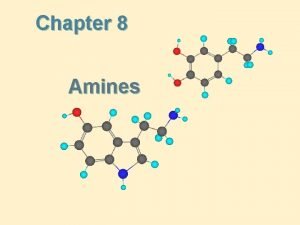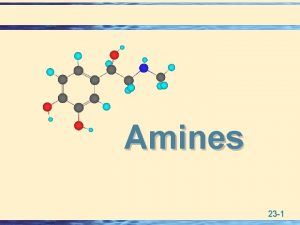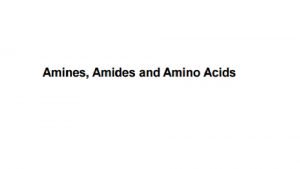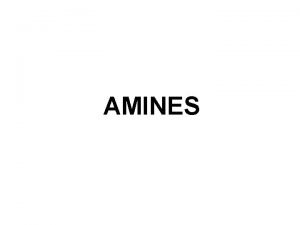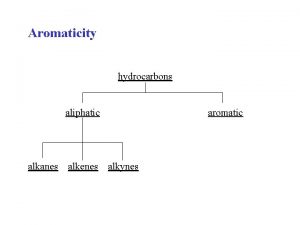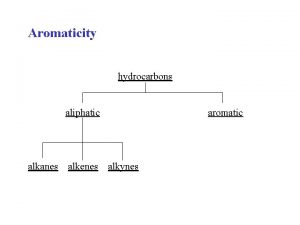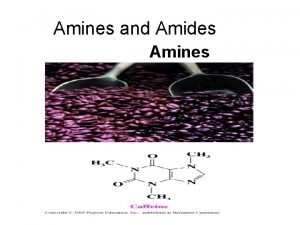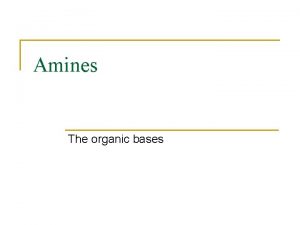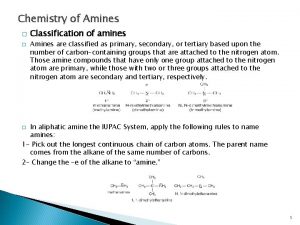ALIPHATIC AMINES Amines are classified into Primary amines









- Slides: 9

ALIPHATIC AMINES

Amines are classified into: Primary amines 1 ry, Secondary amines 2 ry Tertiary amines 3 ry On the basis of the number of of organic groups attached to the nitrogen. Also, amines are classified based on the type of the carbon atoms attached to the nitrogen into alkyl-, aryl- or aralkylamines

Nomenclature of amines: Primary amines: Common nomenclature: most 1 ry amines are named as alkylamines Systematic nomenclature: By adding the suffix amine to the chain or ring system to which the NH 2 group is attached with elision of the final (e)

Secondary and tertiary amines: Most of them are named in the same general way. In common nomenclature we either designate the organic groups individually if the are different, or use the prefixes dior tri- if they are the same.

In systematic IUPAC we use the locant N to designate substituents attached to a nitrogen atom. In the IUPAC, the substituent NH 2 is called amino group. Aryl amines:

Order of Basicity:

Basicity of amines: Arylamines are weaker bases than cyclohexylamines because of resonance. Aniline, a typical arylamine, exhibits the resonance structures shown in the following figure.

Preparation of amines 1) By alkylation of ammonia Nucleophilic substitution reactions of alkyl halides with ammonia afford alkylamines. When 1 -bromooctane, for example, is allowed to react with ammonia, both 1 ry and 2 ry amines are isolated in comparable amounts. In a similar manner, competitive alkylation may continue, resulting in formation of a trialkylamine.

Reductive amination via the imine

